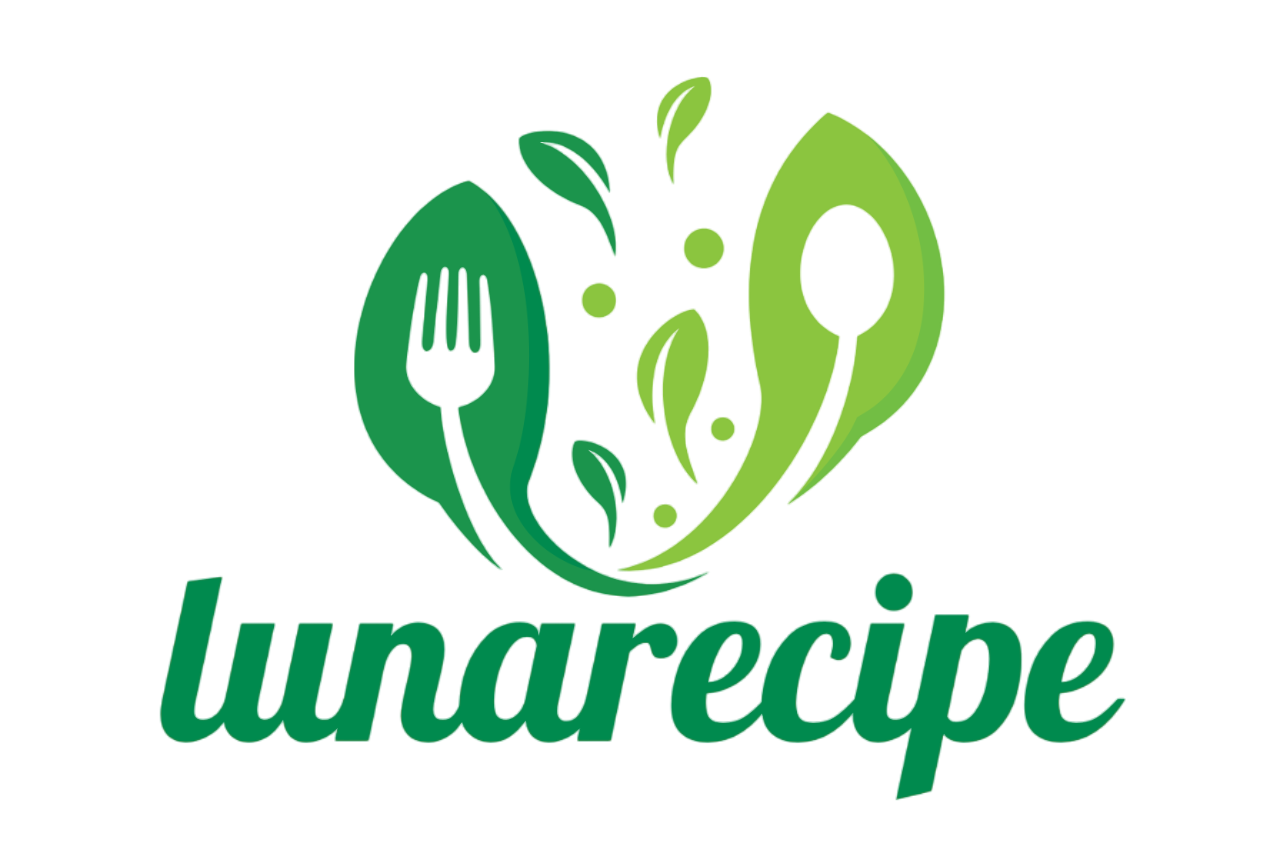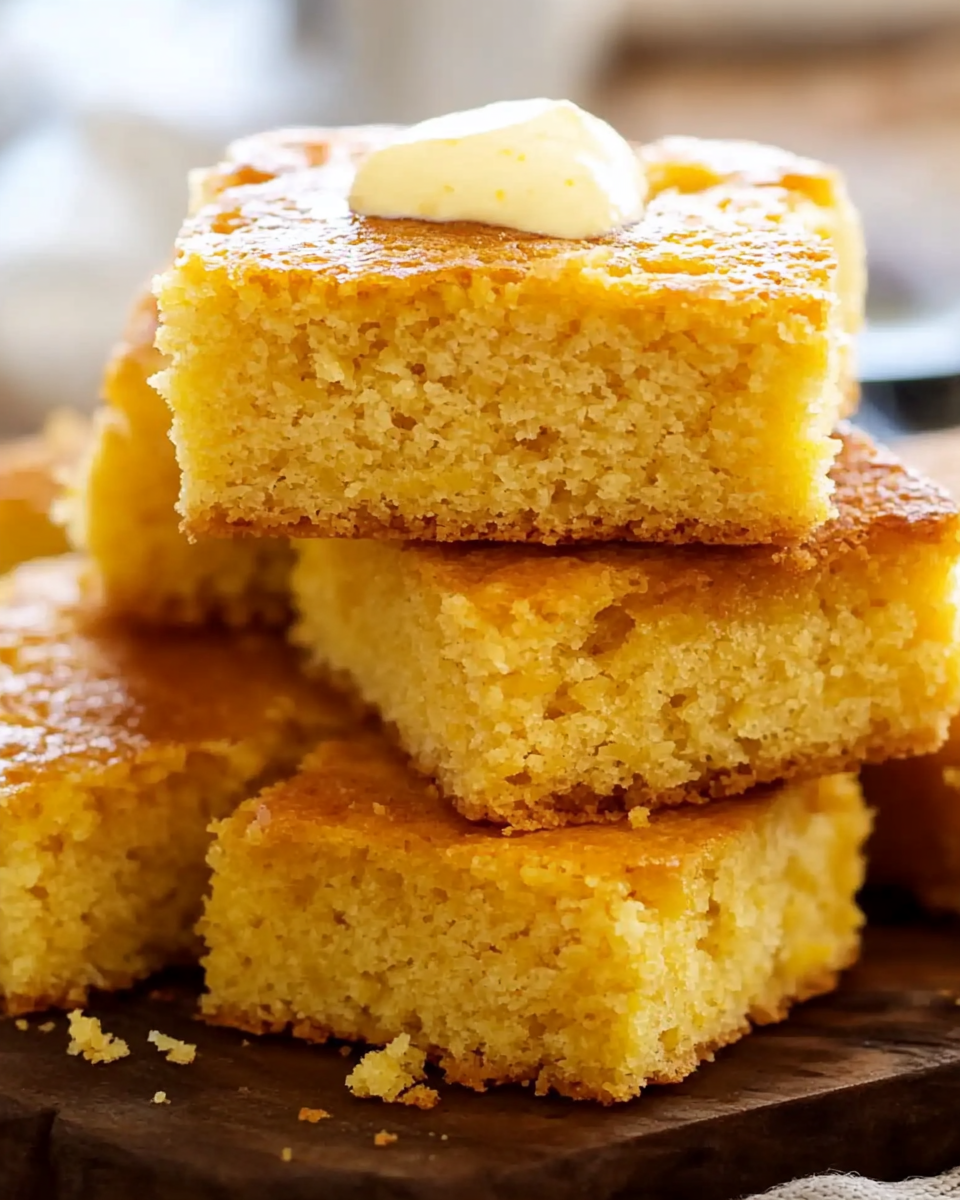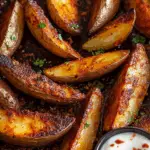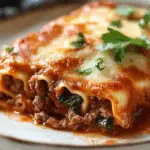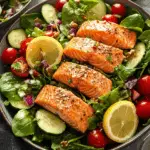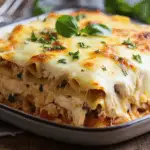This Southern-style cornbread is the perfect balance of crumbly and moist, making it an ideal side dish for any meal. The golden crust and tender interior bring a comforting, homestyle feel to the table, whether paired with chili, soup, or just enjoyed on its own with a pat of butter. The simple ingredients and easy preparation make it an essential recipe for any home cook who loves classic comfort food.
Cornbread is versatile, so feel free to add your own twist by incorporating ingredients like jalapeños for a spicy kick or cheese for extra richness. It’s the perfect crowd-pleasing dish for gatherings, potlucks, or a cozy family dinner. This cornbread is not only delicious but also brings a taste of Southern tradition right into your kitchen.
Full Recipe:
-
1 cup cornmeal
-
1 cup all-purpose flour
-
1/4 cup sugar
-
1 tablespoon baking powder
-
1 teaspoon salt
-
1 cup milk
-
2 large eggs
-
1/4 cup melted butter
-
1/4 cup vegetable oil
-
1/2 cup buttermilk (optional for extra moisture)
Directions:
-
Preheat the oven to 400°F (200°C) and grease a 9-inch square or round baking pan.
-
In a large bowl, whisk together the cornmeal, flour, sugar, baking powder, and salt.
-
In another bowl, whisk together the milk, eggs, melted butter, vegetable oil, and buttermilk (if using).
-
Pour the wet ingredients into the dry ingredients and stir until just combined. Be careful not to overmix.
-
Pour the batter into the prepared pan and spread it out evenly.
-
Bake for 20-25 minutes, or until the top is golden brown and a toothpick inserted into the center comes out clean.
-
Let the cornbread cool for a few minutes before slicing and serving.
Prep Time: 10 minutes | Cooking Time: 25 minutes | Total Time: 35 minutes
Kcal: 210 kcal | Servings: 9 slices
The History and Origins of Cornbread
Cornbread has a rich and deep history, especially in the Southern United States. It has roots that stretch back to Native American cuisine, where corn, or maize, was a staple food. Indigenous tribes in the Americas first used cornmeal to make a variety of dishes. After the European settlers arrived, they adapted these recipes, incorporating cornmeal into bread-making as a more affordable and accessible ingredient compared to wheat flour.
As cornmeal became more widely available, cornbread became a fundamental food item in the American South. By the time of the Civil War, it had already become a common part of everyday meals. Cornbread was not only a necessity but a symbol of sustenance in difficult times. It was cheap, filling, and could be made quickly, making it the ideal food for many households.
The Versatility of Cornbread
Cornbread is incredibly versatile. It can be served as a side dish or enjoyed as a snack or breakfast. The texture and flavor can vary widely depending on how it is made. Some prefer a sweeter cornbread, while others enjoy a more savory version. Some may add ingredients like jalapeños, cheese, or bacon, while others keep it simple with just cornmeal, flour, and butter.
There are also many ways to serve cornbread. It pairs wonderfully with soups and stews, especially in Southern cuisine, where dishes like chili, gumbo, and collard greens are common. Cornbread is also perfect for breakfast, served with butter, honey, or jam. In some Southern households, it’s even eaten with syrup or molasses.
Southern-Style Cornbread
Southern-style cornbread is a particular favorite. Unlike Northern cornbread, which tends to be sweeter and softer, Southern cornbread is more savory and crumbly. The key to making perfect Southern cornbread lies in the ratio of cornmeal to flour and the use of ingredients like buttermilk or lard to create a denser, crumblier texture.
Southern cornbread is traditionally baked in a cast-iron skillet, which helps achieve a crispy crust while maintaining a soft interior. The heat from the cast-iron pan gives the bread a unique texture and flavor that’s hard to replicate with other bakeware.
Cornbread in Southern Cuisine
Cornbread holds an essential place in Southern cuisine. It is present at nearly every Southern meal, whether it’s paired with a bowl of gumbo or served alongside fried chicken. In fact, cornbread is often included in the Southern tradition of serving multiple side dishes at a family gathering or Sunday dinner.
Cornbread also plays an important role in Southern holidays and celebrations. At Thanksgiving, it’s common to find cornbread served with turkey and gravy, or even incorporated into stuffing. Similarly, during the colder months, cornbread is a comforting food that can be eaten with hot stews or chili.
Modern Variations of Cornbread
While traditional cornbread is simple, modern twists on the classic recipe have emerged over time. Some cooks add fresh herbs, cheese, or even chili flakes to make it spicier and more exciting. Sweet cornbread, which uses sugar or honey, is also popular, particularly in Northern states.
Cornbread muffins are another modern take. These individual portions are perfect for parties or gatherings, where guests can enjoy a single serving without having to slice from a larger loaf. Variations in texture and flavor have allowed cornbread to evolve from a basic staple to a sophisticated addition to any meal.
In recent years, cornbread has also found a place in vegetarian and vegan cooking. Using dairy-free milk alternatives and egg substitutes, you can create a delicious cornbread recipe that fits within plant-based diets without sacrificing flavor.
The Cultural Significance of Cornbread
Cornbread is not just a food; it holds cultural significance, especially within African American communities. The African American experience in the South has shaped how cornbread is prepared and enjoyed. It became a symbol of resilience during times of slavery and segregation. Cornbread was often the only affordable and accessible food that could be made to feed large families. The ability to turn a simple and inexpensive ingredient, cornmeal, into a satisfying meal was a testament to the creativity and strength of Southern cooks.
In many Southern households, cornbread is still prepared with love and tradition. It is passed down through generations, with each family adding their own spin to the recipe. From adding extra butter to baking in a well-seasoned cast-iron skillet, cornbread continues to hold a deep cultural connection for many people in the South.
How to Make Perfect Cornbread
To achieve the perfect cornbread, there are a few tips and tricks that can help. First, always use the best quality cornmeal you can find. The cornmeal is the star ingredient, and its flavor will shine through in the finished product. If you prefer a fine texture, you can opt for finely ground cornmeal. For a heartier, more rustic cornbread, coarser cornmeal works wonderfully.
Another key to perfect cornbread is to preheat your pan. If you’re using a cast-iron skillet, make sure it’s preheated before adding the batter. This will help form that crispy crust that’s characteristic of Southern-style cornbread.
Also, be careful not to overmix your batter. Overmixing can lead to dense and heavy cornbread. Mix just until combined, and if there are a few lumps left, that’s perfectly fine. The goal is to create a moist yet crumbly texture that’s light and fluffy in the center.
Cornbread in Different Regions
While cornbread is often associated with the American South, it is enjoyed across the United States in various forms. In the North, cornbread tends to be sweeter, with some versions resembling a cake-like texture. Northern cornbread may include more sugar or honey and can often be served as a dessert.
In the Southwest, cornbread is often made with a spicier twist. Adding jalapeños, green chilies, or even cheese brings a bold and zesty flavor that pairs perfectly with the region’s bold flavors and cuisines.
Cornbread is also popular in Mexican cuisine, where it is often referred to as “pan de maíz.” This variation is made similarly to American cornbread, though it may be slightly sweeter and often incorporates ingredients like cilantro and lime to enhance the flavor.
Conclusion
Cornbread is more than just a dish; it’s a piece of American history and culture. Whether you enjoy it sweet or savory, crumbled into a bowl of chili or served alongside a hearty soup, cornbread is a comforting, versatile food that has stood the test of time. Its simplicity and humble ingredients are what make it so beloved across generations and regions. No matter how you choose to prepare it, cornbread will always remain a staple in Southern kitchens and beyond. So, next time you make cornbread, remember that you’re not just making a dish; you’re honoring a culinary tradition that’s been passed down through generations.
